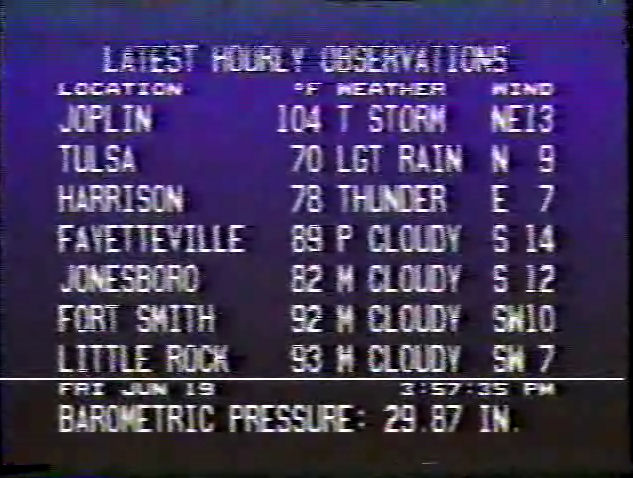I read extensively from a number of sources before writing any of the piece serialized over the past few days, and double checked these sources while writing it. Flight 901 is a fascinating topic, perhaps because it was a big deal that we just didn’t hear about on this side of the world, perhaps because of the exotic locales (wait, so we’re going to fly from an island nation that has abundant volcanoes to another continent to look at another volcano there?!?), perhaps because I’m a confessed NZ-phile.
When I first began reading about flight 901, I didn’t have a horse in the race. Ultimately, after reading numerous web sites, articles, and the full Chippindale and Mahon reports, I could personally only reach one conclusion: Captain Collins and his crew were screwed by Air New Zealand. Not because someone was out to kill them – not even remotely. But because there were failures in communication up and down the chain that had become institutionalized – these failures were now standard operating procedure. The families of the flight crew deserve to have the names of their fathers or husbands – and by extension their own names – cleared now and for all time.
Justice wasn’t exactly done to those left intact on the ground, either. Retired Captain Gordon Vette went on to stake out a new career in aviation safety, and devoted his life to it, eventually adding “Doctor” to his title. His government recognition came in 2007 – a few years after he’d suffered a debilitating stroke that left him cognizant of his surroundings, but unable to communicate:
Captain Vette resigned from Air NZ in the face of political pressure at his views, but his research changed the approach to airline crash investigations worldwide.
Now, crash investigators take an organisational approach, scrutinising systems under which pilots operate, to improve flight safety rather than just apportion blame.
As crazy as it may sound, post-crash investigations weren’t like that before 1980. You can thank Gordon Vette and Peter Mahon for changing that.
Justice Mahon retired in the wake of his report’s controversy, with the High Court of New Zealand admonishing him for a “breach of natural justice” – in essence, publicly claiming that Mahon didn’t know how to judge fairly anymore, which had the effect of disgracing him without going through the much more rigorous and regulated motions of actually disbarring him. He wrote a book about the case and his experiences, “Verdict On Erebus,” which hit the bestseller lists in 1985. He died the following year.
Incidentally, the harsh ruling which damned Justice Mahon personally in a manner unprecedented in New Zealand jurisprudence was decided by a panel of five fellow High Court judges, two of whom had relatives directly employed by Air New Zealand. It’s safe to say that Mahon didn’t have a friend in the world at this point: when the Prime Minister (at the behest of his allies in the government-owned airline under investigation) has crapped on the most important, high-profile work you’ve ever conducted, and an “official verdict” has followed which says you don’t know how to do the job you’ve been doing, allies are few and far between. In 2009, Justice Mahon was given a posthumous award by the New Zealand Airline Pilots’ Association.
The award in question was the Jim Collins Memorial Award for Exceptional Contribution to Airline Safety.
In the austral summer, warming and snow melt still reveals the wreckage of flight 901 on the slopes of Mt. Erebus. The majority of the debris has never been removed.
—
Bibliography/webography:
Erebus.co.nz – an exhaustive archive of material on flight 901, the investigations that followed, and a very even-handed examination of the causes put forth by both investigations. This site is operated by the New Zealand Airline Pilots’ Association, so it’s probably no surprise that it comes down squarely in the pilots’ corner and in favor of the findings of the Mahon Report (which can be downloaded in its entirety as a PDF, along with the two very different black box transcripts and more documents). An absolute wealth of contemporary source material from various news sources can be examined here, with newspaper scans dating back to the first mention of the crash.
New Zealand Herald archives – although none of these articles are contemporary to the accident (scanned copies of contemporary articles can be sourced from the above site), this section of the site is useful as a barometer of the public’s feelings on who gets the blame. With the 30th anniversary in 2009 it was interesting to see wildly differing op-eds appearing, seemingly espousing every possible viewpoint on the spectrum.
New Zealand History Online – a very textbookish approach to telling the story, but with an extensive media gallery that beats just about every other source.
Impact Erebus Two (YouTube) – Parts 1, 2, 3, 4, 5, 6, 7, 8, 9: Clear some time to watch this one in full. Originally produced as a DVD accompanying Gordon Vette’s book “Impact Erebus Two”, this video presentation was uploaded – with Vette’s permission – by the NZ Airline Pilots’ Association. It’s a fascinating look at the perceptual switcheroo that causes sector whiteout, from a pilot’s perspective, and how it applied to flight 901 in particular. Vette himself walks you through it.
TV New Zealand Erebus Disaster Archives (YouTube playlist): A treasure trove of contemporary news source material, though in a somewhat disjointed, non-chronological order. If you’re looking for just one piece that sums everything up, the NZ edition of 60 Minutes did an excellent recap on the 20th anniversary of the flight. Again, an excellent gauge of the “mood of the people” 20 years after the fact.
I’m very wary of citing websites as primary sources for research, but this is a case where some of the above sites provide a wealth of it; I have no qualms about directing you to them to find out more. If I still had eye teeth, I’d give them up for copies of Mahon’s “Verdict On Erebus” and/or Vette’s “Impact Erebus” and “Impact Erebus Two” just to have more material to dig into. These two gentlemen spoke truth to power and went up against the whole damned government to do so; they’re heroes and I’d love to hear their stories in their own word. Finding used copies of any of these three books seems to be rare; finding them on this hemisphere? Well, you might as well try booking a flight from Alma to Antarctica. (If you run across them, please give me a shout and I’d be happy to try to work something out.)
If anyone reading this feels that I’ve committed any major errors in either research or conclusions, I’d also be interested in hearing your thoughts. Heck, if you think I’m right on the money, let me know that too. This piece has been intended as a sort of “primer” about this incident for an audience that hasn’t necessarily been exposed to even the most basic facts about it (allowing for the fact that many print publications haven’t archived material from 30+ years ago online, the only contemporary American account of flight 901 that I could find on the ‘net was a brief article from the April 1981 Christian Science Monitor). It’s not really intended to present any new insights to an audience already familiar with the subject matter – unless, of course, the opinions and conclusions of a non-New Zealander is in some way an insight unto itself (not for me to say; you be the judge).
Thanks to the Mrs., for making me realize, in her own rather unique way, that this needed to be a multi-part entry rather than one big long ramble.


+ There are no comments
Add yours